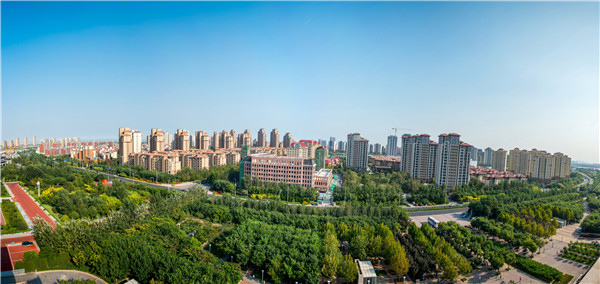 |
|
A paromanic view of The Sino-Singapore Tianjin Eco-City. [Photo provided to China Daily] |
Liu Thai Ker speaks softly, his bearing alone exuding the considerable weight of his authority. His profound influence in town planning as head of Singapore's Housing Development Board and Urban Redevelopment Authority is well known, and many regard the 78-year-old as the father of urban landscaping in the country.
And Singapore being a city-state, Liu's experience has been eagerly tapped by many Chinese cities whose mayors have looked beyond national borders in an effort to renew and transform their cities through urban planning.
In the process, Liu has acquainted himself with everything he needs to know working with various levels of decision-makers in China. In short, he has become a kind of old China hand.
"China and Singapore share as many similarities as they do differences," Liu says, reflecting on the roles the two governments have played in shaping their own city- and townscapes.
"Both governments enjoy a high-level of control over planning matters," he says. "And their authority is reinforced by the fact that in both countries, land is owned by the state.
"The Singaporean Government set its eyes on urban planning right after the founding of the country in 1965, while China's central government and various tiers of local government started to put great emphasis on the issue from the 1980s."
Against this backdrop the China-Singapore Suzhou Industrial Park, the much-lauded fruit of collaboration between the two countries, was delivered.
A county-level administrative area located in Suzhou, Jiangsu province, the park covers a total of 288 square kilometers, of which, the cooperation area covers 80 sq km. The agreement on jointly developing the park was signed by the then Chinese vice-premier Li Lanqing and the late Singaporean Prime Minister Lee Kuan Yew on February 26, 1994. The Joint Steering Council of the project was led by the then Chinese vice-premier Wu Yi and the then Singaporean deputy Prime Minister Wong Kan Seng.
"The approach is entirely top-down," Liu says.
The approach is seen to have guaranteed the smoothness of the project when things could have got bogged down at certain points in managerial, procedural and other quagmires. This also partly explains why another high-profile urban planning project between the two countries, the Sino-Singapore Tianjin Eco-City, also adhered to the government-to-government model. Development began in 2008.
Between these two projects, and since 2008, China and Singapore have started a string of urban planning projects, many with Liu at the center. In the meantime things have veered toward the commercial, national governments no longer being involved. Instead, local governments, mostly at city and county level, have recruited Singaporean companies for their expertise in the area.
The lessons learned in the process have even found their way into a book, Challenges and Reforms in Urban Governance-Insights from the development experience of China and Singapore. Copublished by China's Development Research Center of the State Council and Singapore's Center for Livable Cities, under the Ministry of National Development and the Ministry of the Environment, the book opens a unique window onto China's urbanization process by tracing the history of the planning projects that Singapore has helped China to develop in 33 of its cities. The great bulk of these projects is concentrated on China's coastal regions in the east and southeast.
|
|
|
|
|
|
|
|
